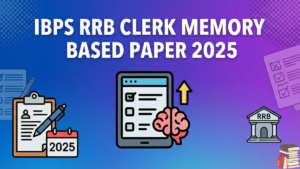Reasoning Questions for NIACL AO Exam 2018-19:
Reasoning Ability is an onerous section. With the increasing complexity of questions, it becomes hard for one to give it the cold shoulder. The only way to make the grade in this particular section in the forthcoming banking exams like NIACL AO Prelims is to practice continuously with all your heart and soul. And, to let you practice with the best of the latest pattern questions, here is the Adda247
Reasoning Quiz based on the exact same pattern of questions that are being asked in the exams.
Watch Video Solution
Directions (1-5) Read the following information carefully and answer the questions given below:
Seven books P, Q, R, S, T, U and V are published in same month of the different years- 2010, 2016, 2012, 2001, 2005, 2014 and 2019 but not necessarily in the same order.
Book Q published on an odd numbered year. Only three books published in between Q and U. Book R published 4 years after the year in which S published. V published on the year which is completely divisible by 3. T published on an even numbered year before U. P published one of the years before Q.
Q1. How many books published in between S and V?
Q2. Book P published on which of the following year?
Q3. Which of the following book was published before R but after S?
Q4. Book R published after how many years with respect to book Q published?
Q5. Which of the following book was published immediate after U published?
Directions (6-8): Read the given information carefully and answer the questions given below.
There are six boxes M, N, O, P, Q and R each box is of different weight. Each box is of different colours i.e. Yellow, Green, Blue, Brown, Grey and White (not necessarily in same order).
Box R is heavier than P. Brown colour box is the 3rd heaviest box. Box N is not the lightest box. Box O is heavier than box M. Weight of Box N is less than box M. Box Q is heavier than N but not the heaviest. Box M and P are not green colour. Box N is grey colour. Box M is neither yellow nor white. Box O is blue colour, but it is not the heaviest box. White colour box is heavier than yellow box but not heavy as green colour box.
Q6. Which of the following box is the heaviest box?
Q7. Which of the following box is yellow colour?
Q8. Which of the following box is second lightest box?
Directions (9-10): Read the following information carefully and answer the questions given below:
There are seven members S, T, U, V, W, X and Y in a family among them only 3 females. S is married to V. W is grandson of V who has two children. U is sister in law of Y who is unmarried. X is brother in law of S who is mother in law of U.
Q9. How X is related to Y?
Q10. Who among the following is the father of W?
Directions (11-15): In these questions, relationship between different elements is shown in the statements. The statements are followed by conclusions. Study the conclusions based on the given statements and select the appropriate answer. Give answer-
Q11. Statements:
A>G<J, I≤D, J<O=K>D.
Conclusions:
I. G>D
II. O>I
Solution:
I. G>D (False)
II. O>I (True)
Q12. Statements:
P≥W≤Z, W>K, Q>O<Z
Conclusions:
I. W>Q
II. Z>K
Solution:
I. W>Q(False)
II. Z>K (True)
Q13. Statements:
B≥L<J>O, E>Y<L
Conclusions:
I. B>Y
II. J>Y
Solution:
I. B>Y(True)
II. J>Y (True)
Q14. Statements:
T>O<A<Q≥M>N<V
Conclusions:
I. T>N
II. A>M
Solution:
I. T>N (False)
II. A>M (False)
Q15. Statements:
B>Q≥R, Z>T≥R>J
Conclusions:
I. B > J
II. Z > Q
Solution:
I. B > J (True)
II. Z > Q (False)





 IBPS RRB Clerk Prelims Exam Analysis 202...
IBPS RRB Clerk Prelims Exam Analysis 202...
 IBPS RRB Clerk Memory Based Paper 2025, ...
IBPS RRB Clerk Memory Based Paper 2025, ...
 IBPS RRB Clerk Expected Cut off 2025, Ch...
IBPS RRB Clerk Expected Cut off 2025, Ch...








